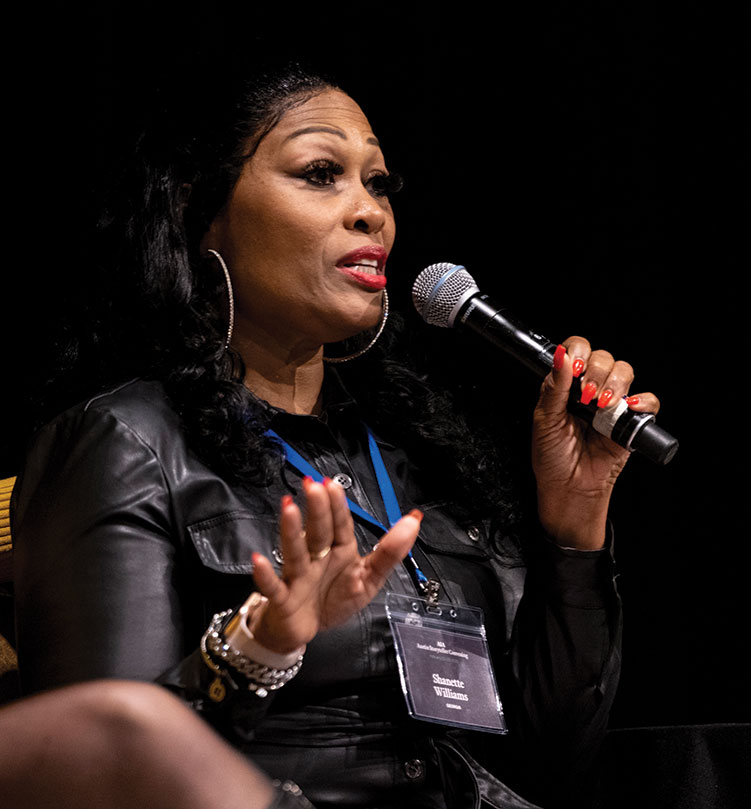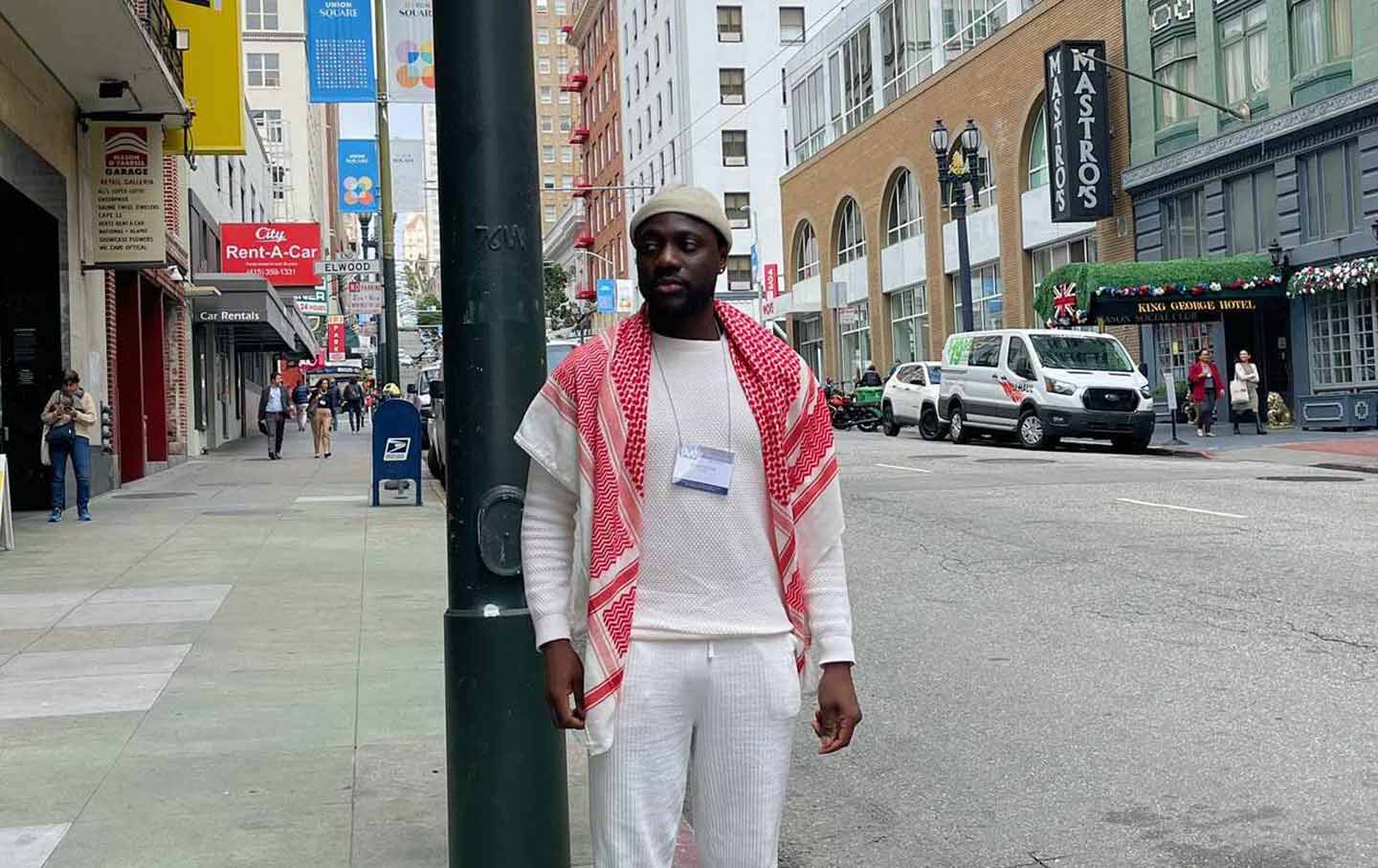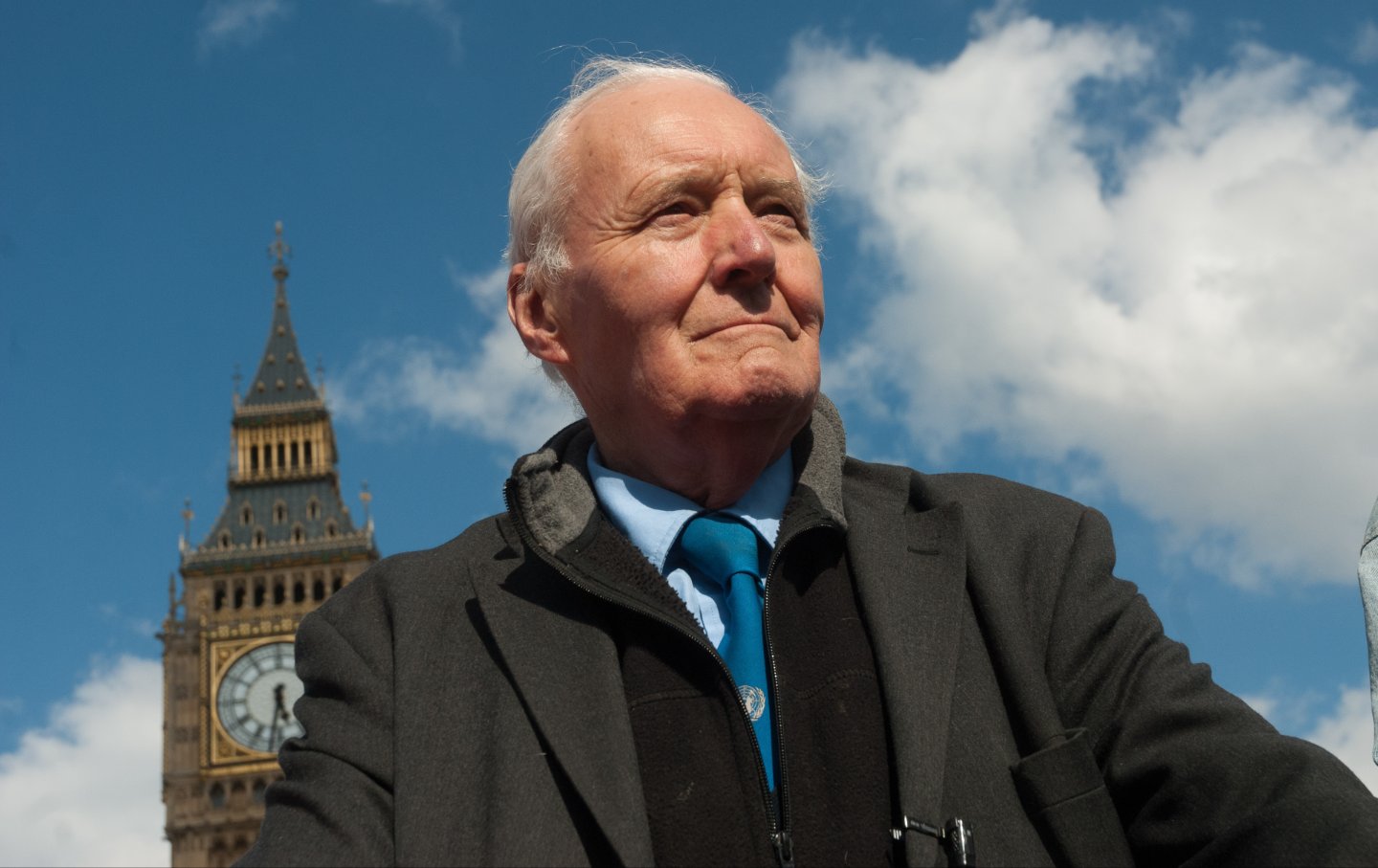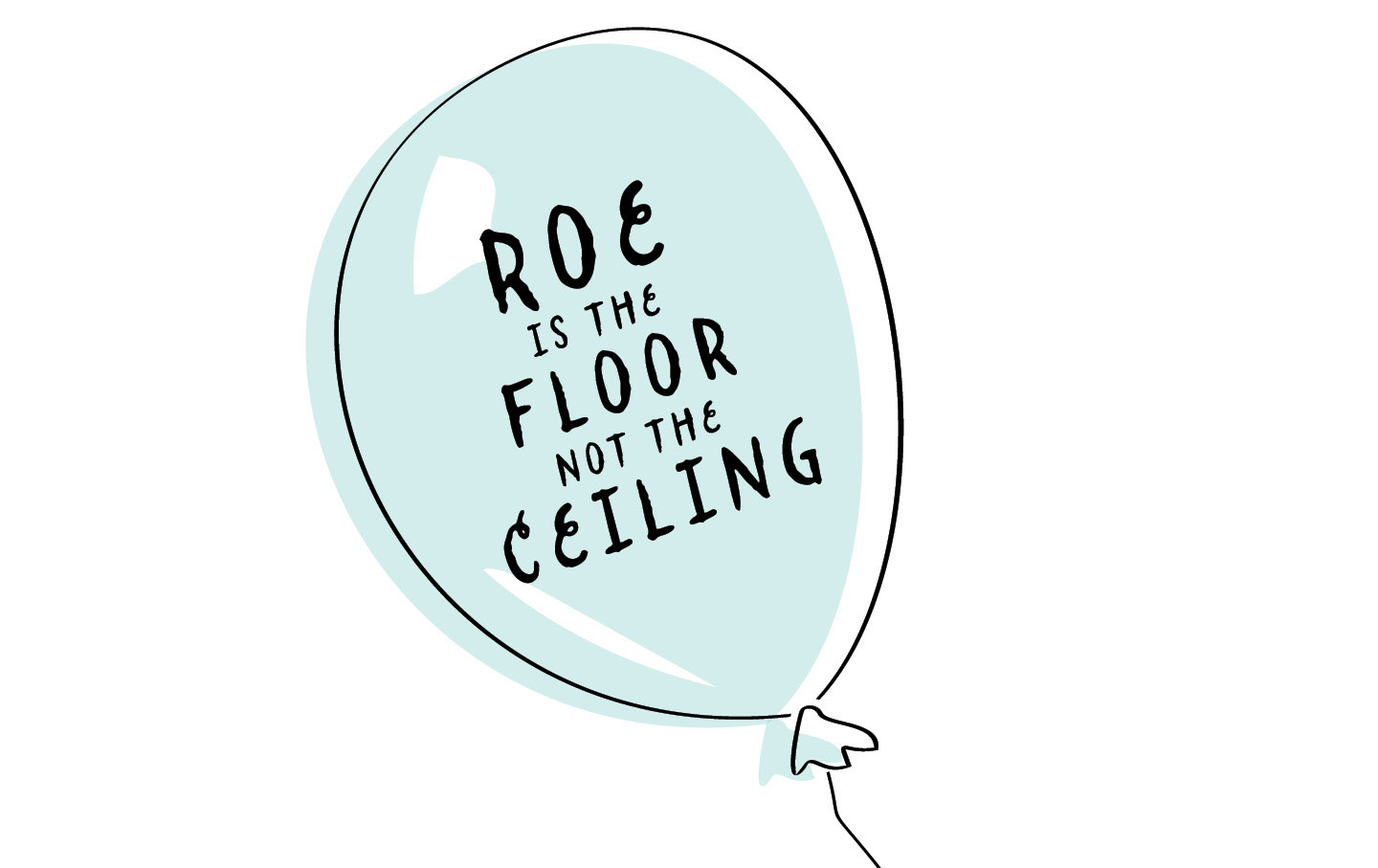
When the Supreme Court overturned Roe v. Wade last June, abortion opponents weren’t the only ones ready to embrace a world beyond it. Dr. Colleen McNicholas, for one, had presided over the last abortion clinic in Missouri, where doctors performed fewer than 100 abortions in the year before Roe fell. The state restrictions allowed under Roe, including a 72-hour waiting period, meant that most Missourians seeking abortions were already traveling out of state for care. Erika Christensen, for another, had learned in 2016, when she was 30 weeks pregnant, that her fetus wouldn’t be able to breathe outside the womb. Since her home state of New York had criminalized abortion after 24 weeks, she flew to Colorado and paid $10,000 for an injection to end her pregnancy.
“Roe is the floor, not the ceiling” was a call first issued by reproductive justice activists, but it became a movement rallying cry, emblazoned on T-shirts and posters. Even mainstream groups like Planned Parenthood used that message to press for expanded abortion access, fighting against state-level restrictions and for Medicaid coverage of abortion. Then the floor dropped out. Yet even as they mourned, many providers and activists were ready to build something better.
“Dobbs has given us an opportunity,” said one prominent abortion provider, speaking on condition of anonymity. “It has wiped away 50 years of bullshit, legally.”
Roe had hinged on a dividing line that even its author, Justice Harry Blackmun, acknowledged was arbitrary. Feeling a need to allow states to ban abortion at some point in pregnancy, Blackmun considered the end of the first trimester before settling on “viability,” when, he wrote, a fetus “presumably has the capability of meaningful life outside the mother’s womb.” After viability, the Roe decision said, the state had a “compelling” interest in fetal life and could enact restrictions on abortion to that end.
This framework downgraded the rights of a pregnant person after fetal viability, ignoring the reasons someone might seek an abortion later in pregnancy. A recent study by Katrina Kimport found that there are two main reasons for abortions after 24 weeks—new information, such as a serious fetal health diagnosis, or barriers to abortion earlier in pregnancy, such as cost and finding a provider. These barriers have only grown since Dobbs and were already highest for low-income people of color. “You don’t get an abortion later in pregnancy unless something really bad has happened,” said Dr. Diane Horvath, a cofounder of Partners in Abortion Care, one of three clinics in the country that routinely provide care after 28 weeks. In the months since Dobbs, Republicans have doubled down on their claim that Democrats want to permit “abortion up until birth,” painting their opponents as extremists in spite of the fact that the Republicans are responsible for overturning a 50-year-old constitutional right. But “this idea that people carelessly have abortions later in pregnancy—it’s a false narrative, and it’s a really deliberate attempt to vilify people who need abortions later in pregnancy and the people who provide them,” Horvath said. “These decisions are never better made by legislators or by voters than they are by pregnant people working with their health care providers.”
Roe itself showed just how imperfectly legal lines translate into medical reality. Viability, Horvath explained, is less like a line than a window, ranging from about 24 to 28 weeks, when, depending on fetal development and access to specialized equipment, a fetus might survive outside the womb. Nonetheless, it has long been accepted as a bright line marking the cutoff for legal abortion even in many blue states. After Roe, lawyers for clinics felt compelled to defend viability as a “principled line” in order to prevent the courts from moving that line even earlier. Post-24-week abortions were relegated to a handful of clinics in the minority of states that allowed them. A pervasive stigma, bolstered by pro-choice support for the Roe framework, crystallized around later abortions. Even as the movement used Christensen’s story, published by Jezebel in 2016, to demonstrate the wrenching harm of abortion restrictions, they could also cite Roe as an excuse not to pursue policies that would help people in her predicament.
“Now it’s time to honor those stories,” said McNicholas, a member of the governing affairs committee at the American College of Obstetricians and Gynecologists and the chief medical officer of Planned Parenthood of the St. Louis Region and Southwest Missouri. “We do that by rebuilding a system in a way that makes sure that other patients don’t have to sustain those same injuries.”
But the architects of the most promising and well-funded efforts to save abortion access in states where abortion is banned, restricted, or under threat are pushing measures that use Roe’s viability framework. In five of these states—Arizona, Florida, Missouri, Ohio, and South Dakota—citizens have proposed ballot measures to restore or protect abortion access in 2023 or 2024. Four of the current versions of these proposals would enshrine a state’s right to ban abortion after viability or, in South Dakota’s case, at the end of the second trimester. In the fifth state, Missouri, where there’s a legal battle over the inflammatory ballot language proposed by the Republican secretary of state, the ballot language has not been finalized, but advocates are entertaining versions that would allow the Legislature to ban abortion after viability or 24 weeks. Proponents of these compromises told me they see them as a form of harm reduction. In states like Missouri and South Dakota, where abortion is banned, and Arizona and Florida, where 15-week bans are in effect, advocates feel an urgency to restore the status quo under Roe.
Florida’s proposed initiative, which also leaves in place the state’s parental notification requirement, “returns the status in Florida to what it was in terms of our ability to access the health care up until the point of viability,” Kara Gross, the legislative director of the Florida ACLU, told me. In Florida, the bar for passing a ballot initiative is particularly high; voters approved a legislative proposal to raise the threshold to 60 percent in 2006.
“Everything that we have seen shows that these protections for access to abortion are what the people in Florida need, and want, and support,” Gross said.
But many providers and reproductive justice activists have grown frustrated with this defensive approach. With ballot measures offering the greatest hope of restoring abortion access in many red states, they worry that the movement is repeating the mistakes of the past rather than prioritizing those most affected by abortion restrictions. “When we, as a movement, were on the defense, it was easy to say that abortion bans are bad and abortion bans disproportionately affect the most marginalized,” McNicholas told me. “When we are now in a position to take the offense…where we have an opportunity to rebuild with our values at the center…our own internalized stigma is still showing its face.”
Dr. Jenni Villavicencio, an abortion provider and public policy expert, agreed. “We have been freed from the chains that Roe put on us, because that is exactly what that was,” Villavicencio told me. “And we are facing a very real conversation about ‘What actually is reproductive justice? What actually is abortion access?’ And we are not meeting that moment.”
Popular
“swipe left below to view more authors”Swipe →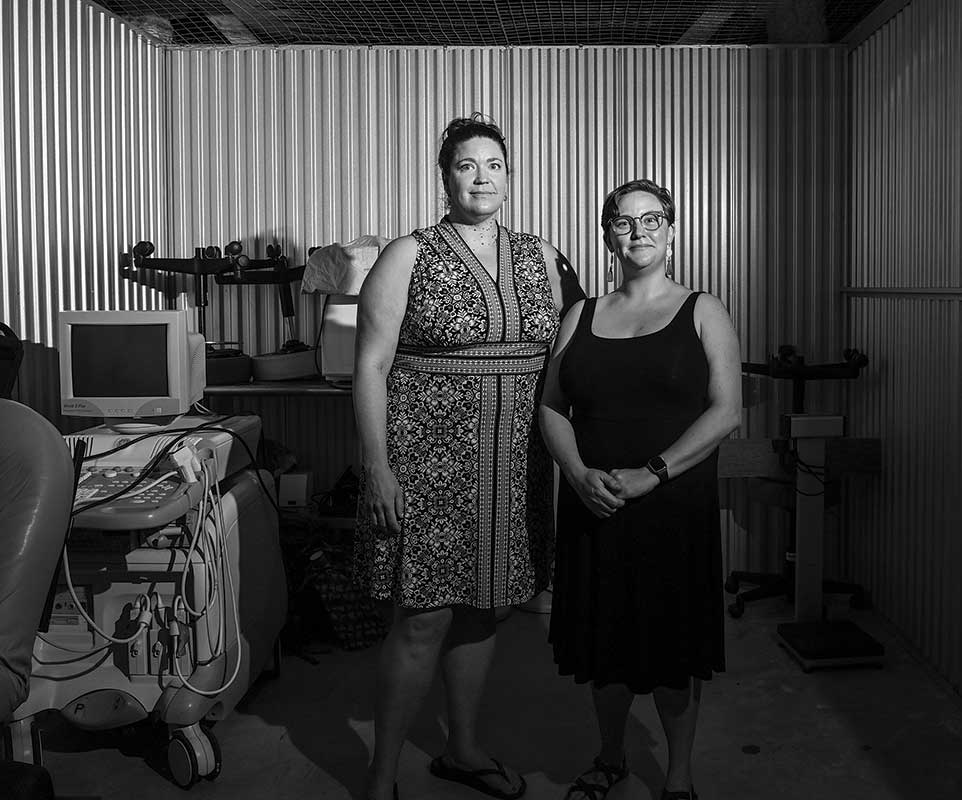
Last November, Michiganders demonstrated just how popular abortion rights have become. Voters there passed an initiative enshrining reproductive freedom in the state Constitution with 57 percent of the vote, while reelecting pro-choice Governor Gretchen Whitmer and handing the Democrats full control of the state Legislature for the first time in 40 years.
Barely noticed in the fanfare over the initiative’s success was the compromise at its core. The measure allowed the state to “regulate” abortion after viability, although any ban at that stage would need to make exceptions for a pregnant person’s “life or physical or mental health.” To many advocates, this compromise didn’t seem important—after all, Michigan has long had such restrictions. But as states across the country follow Michigan’s example, some advocates see enshrining viability bans in state constitutions as a missed opportunity.
“When we’re talking about amending state constitutions, these are meant to create and sustain long-standing rights and freedoms and should be insulated from the changing political winds,” said Andrea Miller, the president of the National Institute for Reproductive Health (NIRH). In a recent piece for Elle, Miller wrote of the imperative to leave the Roe framework behind for good: “Until those who support abortion rights reckon with the compromises that the Roe framework created and stop white-washing history, we’ll never build a just and equitable future,” Miller wrote.
A few states have taken that vision to the polls. Vermont enshrined in its Constitution a sweeping right to reproductive freedom with no limit; 77 percent of voters supported it in November 2022 despite anti-abortion messaging that claimed it would allow abortion up until the day of birth. California’s reproductive freedom amendment, passed with 67 percent of the vote, didn’t mention viability explicitly, though it’s unclear exactly how the ballot measure squares with the state’s existing viability ban. Amendments initiated by state lawmakers in Maryland and New York, where abortion is legal but restricted later in pregnancy, do not mention viability. In Colorado, where abortion is not restricted based on gestational age, activists are pursuing an amendment to end the state’s ban on Medicaid funding of abortion. “Dobbs fundamentally changed everything, and it put Colorado abortion rights advocates on the offensive,” Karen Middleton, president of Cobalt, told me in a statement. Oklahoma activists are discussing a potential ballot measure to repeal the state’s total ban; the question of whether to include a viability ban is an active part of that conversation, participants said. Advocates in Oregon, where there are currently no gestational limits on abortion, told me they’re already planning a citizen-initiated amendment to protect those rights as well as to protect people from discrimination based on gender identity and sexual orientation for 2026. “Part of the reason we’re looking at a longer timeline is, we want to continue doing this deep movement-building work in our state,” Cassie Purdy, the political director of Planned Parenthood Advocates of Oregon, told me. Activists in the famously progressive state say that their success at protecting abortion and LGBTQ rights is not an accident of demographics, but rather the result of bold organizing and deep canvassing on issues like Medicaid coverage for abortion and gender-affirming care that succeeded in pushing voters to the left on these issues.
“Oregon has the best abortion policy in the country, and it is among the states with the best LGBTQ protections in the country,” Blair Stenvick, the communications manager of Basic Rights Oregon, told me. “No, we didn’t get there by accident.”
But proposals in Florida, Arizona, and Ohio are following Michigan’s example. Ohio’s initiative has been certified for the ballot this November; Florida advocates are still gathering signatures for 2024. The Ohio initiative allows abortion to be “prohibited” after viability, defined as “the point in a pregnancy when, in the professional judgment of the pregnant patient’s treating physician, the fetus has a significant likelihood of survival outside the uterus with reasonable measures.” South Dakota’s proposed ballot language for 2024 is even narrower, allowing state lawmakers to “regulate” abortion after the first trimester in what proponents call a “literal codification of Roe.” The local Planned Parenthood affiliate has opposed the language, telling The Nation in a statement: “We don’t believe it will adequately reinstate the right to abortion in South Dakota.”
“A restoration of Roe is popular here with the voters of South Dakota,” said Adam Weiland, cofounder of Dakotans for Health, which is leading the effort to gather signatures to get the measure on the 2024 ballot.
In Missouri, activists are pushing a measure to overturn the state’s total ban in 2024. Some of the 11 versions of the measure under consideration would allow the state Legislature to ban abortion after “viability” or 24 weeks of gestation; some explicitly maintain the state’s ban on government funding of abortion; and some allow for parental consent laws. “Nobody wants medically unnecessary restrictions on abortion,” said Mallory Schwarz, the executive director of Abortion Action Missouri, formerly known as Pro-Choice Missouri. But she feels an urgency to act. “We have an opportunity now to make a transformative change in the abortion-access landscape in Missouri that we don’t know if we’ll have in the future, as evidenced by the continued attacks on the initiative-petition process.”
Pamela Merritt, the executive director of Medical Students for Choice, a group that has taken an unapologetic stance against viability limits, grew up in Missouri. She said this strategy feels shortsighted, aimed at swaying moderate voters for a short-term win rather than building long-term power. In July, Merritt decided to stop participating in discussions about the ballot initiative in Missouri over concerns about the restrictive language in 10 of the 11 proposed versions.
“I feel very confident that we are not going to build towards liberty, and towards a world where bodily autonomy is upheld for all people, by proactively accepting restrictions in an effort to appease the same voting bloc…of suburban white moderate women who, honestly, are the reason why we had the restrictions that led to the ultimate loss to begin with,” Merritt said.
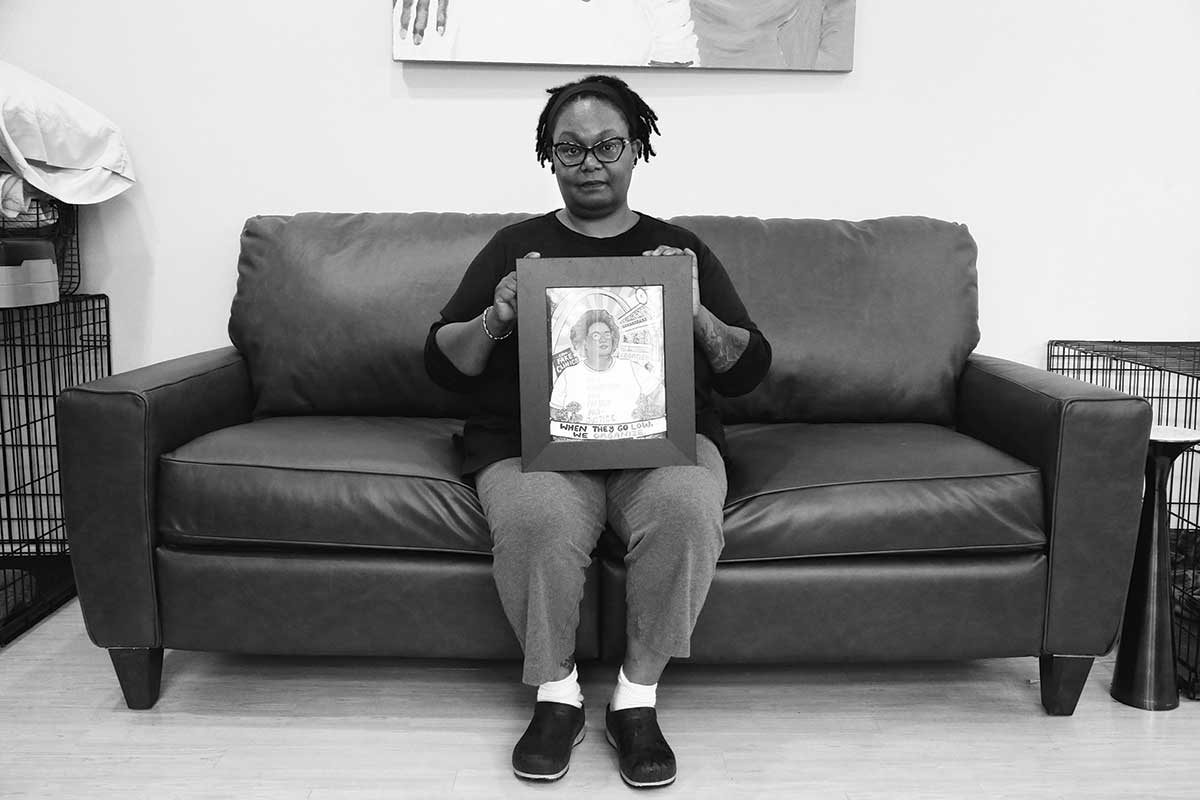
On June 21, leaders from Naral, Planned Parenthood, and the reproductive justice organization SisterSong gathered for a press call on Zoom to mark the first anniversary of the Dobbs decision. During the Q&A session, I asked each of the leaders about the pros and cons of including viability bans in ballot initiatives.
Mini Timmaraju, president of NARAL, demurred on the viability question, saying, “We’re a national org; we defer to our state and local partners about the solution they need to craft for their community.” As I finished asking my question, I heard a ding. Alexis McGill Johnson, the president of Planned Parenthood, had dropped off the call. Facilitators interjected, telling me she had another call; then staff followed up with a statement that Planned Parenthood had already sent to my colleague T.S. Mendola acknowledging that “viability limits are arbitrary” before deferring to state-based groups to make decisions based on their differing “political climates.”
On the call, Monica Simpson, the executive director of SisterSong, echoed Timmaraju’s sentiment. “I think we’re going to have to continue to just grapple with the ways in which we use [ballot initiatives] the most effectively…and really [make] that decision with community, with leaders, with folks who are on the ground in those states,” Simpson said. “We are at a place right now where we literally have to run and think about every possible strategy, every possible tool that we can use in order to not only win back but to also think about the opportunities for advancing some proactive measures and strategies.”
Andrea Miller of the NIRH, a group that works closely with state and local partners across the country, has taken a more pointed stance. “Just please don’t make the assumption from the jump that the only way to win these is to make those compromises,” Miller told me. “And, at the very least, have a really honest dialogue about who’s being left behind and what to do about that.”
At the forefront of this conversation, somewhat surprisingly, is the leading professional network of ob-gyns, the American College of Obstetricians and Gynecologists. Founded in 1951, ACOG has more than 60,000 members and issues guidelines that form the standard of care for the profession. While ACOG opposes abortion restrictions on the grounds that they interfere with evidence-based care, researchers in April revealed that ACOG’s political action committee had donated $1.3 million to anti-abortion lawmakers. In 2022, the organization approved an updated policy on abortion that includes the line: “ACOG strongly opposes any effort that impedes access to abortion care and interferes in the relationship between a person and their healthcare professional.”
Even this statement was not without controversy. Sources within the organization said it involved immense effort from members who demanded a clear stance opposing viability bans as well as “knock-down, drag-out fights” during meetings. Then, in April, almost a year after ACOG approved the statement, the group’s Ohio division seemed to go against it, endorsing Ohio’s ballot language in a statement that referred to viability bans as “reasonable limits.” “This common-sense amendment will restore and protect the vital reproductive rights that were guaranteed by Roe v. Wade for fifty years,” Dr. David Hackney, the chair of ACOG Ohio, and Dr. Amy Burkett, the immediate past chair, wrote in the statement.
ACOG typically does not allow its state divisions to contradict its policy statements. But the ACOG board had held a closed-door meeting where it agreed to permit the Ohio division to break with national policy, sources in ACOG said. Some in the organization were furious about this compromise, but Hackney said he saw it as a way to preserve the greater good. Most important, he wanted to fend off the Ohio law that makes performing an abortion after six weeks a felony, which is on hold pending a lawsuit. “The net benefits of the [amendment] far outweigh the exact concerns regarding the viability language,” he said. “Having looked at the specter of potential criminal charges” under the six-week ban, Hackney added, “I would take this in a second.”
Doctors like Diane Horvath were furious. “When…an organization of my peers calls a viability ban ‘common sense,’ I feel like they’re throwing my patients under the bus; they’re throwing me under the bus,” Horvath said. “These are the same people who will send patients to me when their patients need post-viability care.” Hackney, a maternal fetal medicine specialist, acknowledged that he does send patients with fetal anomalies who are beyond Ohio’s current 22-week limit to clinics like Horvath’s. “I do understand her point, and there were a lot of conversations along these lines,” he said.
In a statement, ACOG president Dr. Verda Hicks acknowledged that ACOG’s members “are not immune” to differences of opinion “about how best to restore access to the full spectrum of reproductive health care.”
“ACOG strongly discourages the inclusion of viability in legislation or regulation,” she added. “Viability is a complex and nuanced concept that is often misused by those that oppose access to abortion care.”
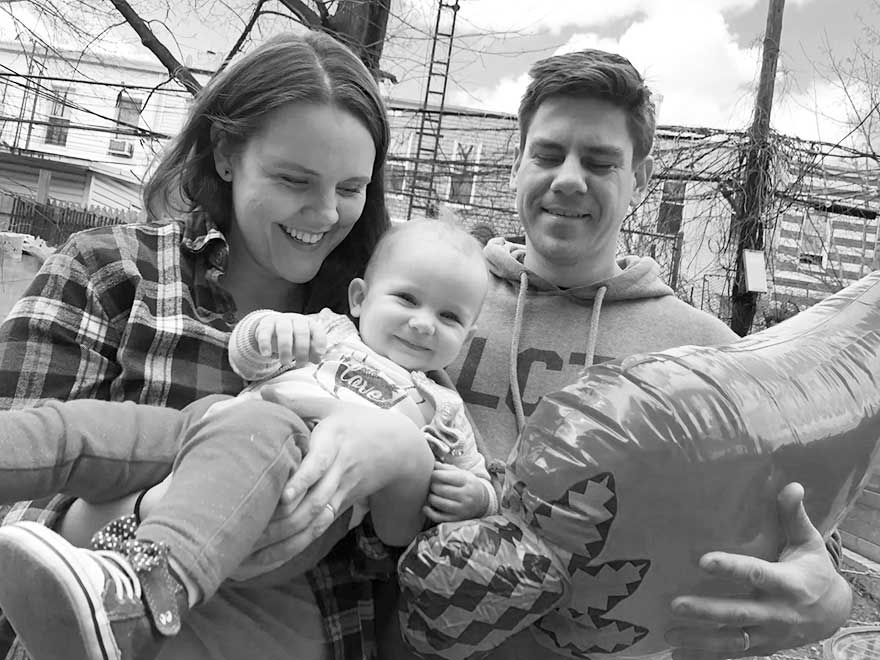
Following their ordeal, Erika Christensen and her husband, Garin Marschall, became activists for the cause of abortion without government interference. They successfully helped to push New York in 2019 to decriminalize abortion and expand the exceptions that would allow it after 24 weeks. But polling data was always a sticking point. Even within the abortion rights movement, the prevailing wisdom has been that the public supports abortion access early in pregnancy and supports restrictions later on. The latest Gallup poll shows that in the wake of the Dobbs decision, a record-high 69 percent of people support the legality of first-trimester abortions, but that support drops to 37 percent for second-trimester abortions and to 22 percent for third-trimester ones.
Ballot measures are the most direct reflection of public opinion that our political system allows, so proponents of these initiatives care intensely about polls. “What we keep hearing in all these states—Ohio, Michigan, etc.—is that viability must be included, because that’s what the polling says,” Marschall told me during a recent Zoom call.
But Christensen and Marschall suspected that after Dobbs, with the public deeply skeptical of state overreach, these trends might have shifted. They worked with the polling organization PerryUndem to put together a survey that would test these assumptions. Pollsters contacted 4,000 people of all political stripes across the country, concentrating most heavily on Arizona, where Marschall and Christensen now live and where advocates are pushing a ballot measure for 2024.
Half of the sample received the Michigan ballot language, which explicitly allowed the state to regulate abortion after viability. The other half got the same language but with the line about viability removed. Conventional wisdom suggested that the language allowing a viability ban, which researchers called the “viability ballot,” would get more support. But that’s not what happened. Instead, the viability language fared worse; there was a 15-point drop in people who said they would “definitely” vote for the measure with the viability language included.
Duncan Gans, senior research analyst at PerryUndem, sent the results to his boss, Tresa Undem, who told him they must be wrong. Gans agreed. He thought perhaps the inputs for the two measures had somehow gotten swapped. So he double-, triple-, and quadruple-checked. The results were right.
“There’s a large portion of voters that don’t want any state involvement in any decisions related to abortion, including after viability,” Gans told me. Dozens of respondents left comments elaborating on this view. “I do not want the state to have any say in denying an abortion, including after viability,” one respondent said. “I like everything about this amendment, except allowing the state to have any say in whether a woman gets an abortion or not,” said another. “I am totally against ANY KIND OF STATE INTERFERENCE to our bodies!” said a third.
The poll results landed in Christensen’s inbox while she was at her 6-year-old daughter’s swimming lesson. On the side of the pool, as her daughter swam, Christensen began to weep.
“I just couldn’t believe it,” she told me. “I had a third-trimester abortion, and I keep being told, over and over again, that everyone thinks I’m a murderer, and they’re not with me, and they think my care should be criminalized, and that I should be turned away and have to travel,” Christensen said. “And then here I had pages and pages of people saying, ‘No, fuck that.’”
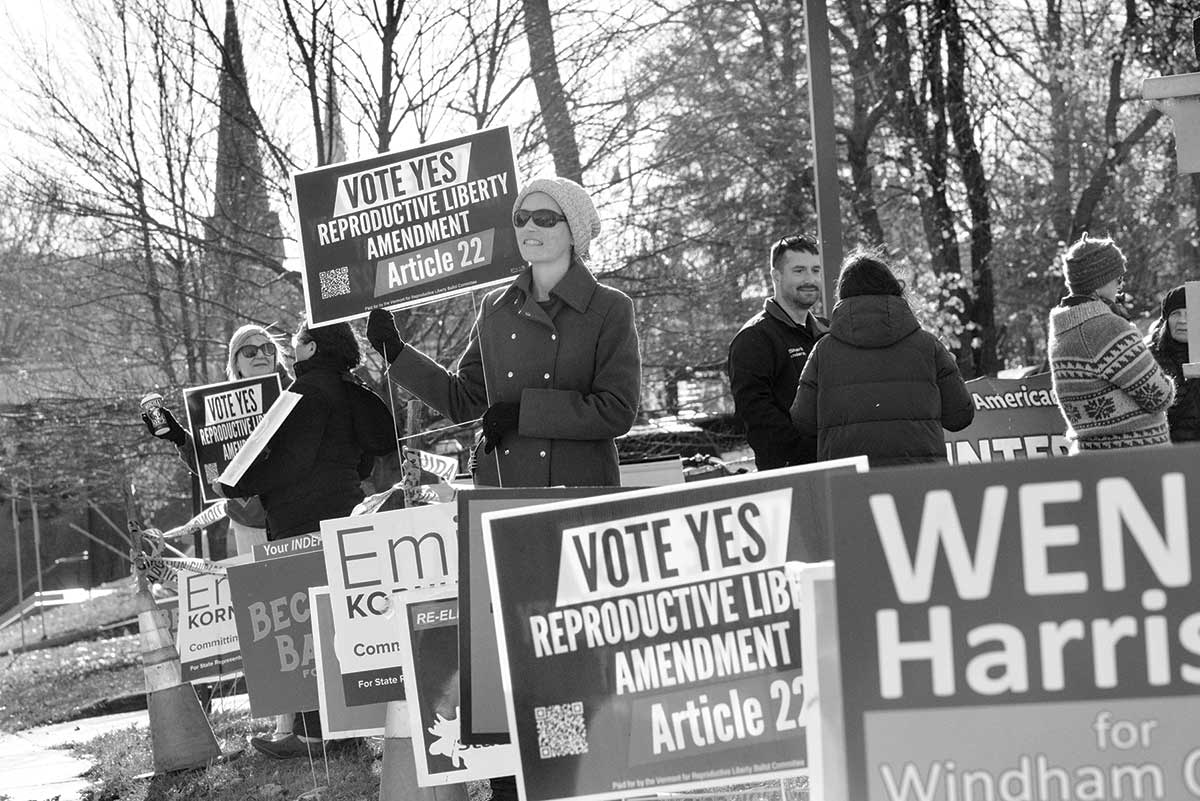
Kelly Hall prides herself on backing ballot measures that win. Prominently displayed on the website of her organization, the Fairness Project, is its track record of triumphing in 32 of the 34 ballot campaigns it has been a part of. Founded by SEIU United Healthcare Workers West in 2015, the Fairness Project worked on progressive initiatives to raise the minimum wage and expand Medicaid, including in red states like Arkansas, South Dakota, Oklahoma, and Missouri, before getting involved in abortion last year. It has already spent more than $1 million promoting Ohio’s November abortion ballot initiative and the campaign that successfully fended off an attempt to make that initiative harder to pass.
The Fairness Project has ruffled feathers among some longtime advocates of abortion rights because of what those advocates see as a focus on winning short-term victories rather than building long-term movements. Hall described the tension as perennial in political organizing: “How much could you achieve with the electorate that you have right now, with the resources you have right now? And is that worth doing? Or should you wait and have a longer period of time with the status quo but the potential for a broader, more expansive policy in the future?” Any decision to wait and build a base must be weighed against the uptick in Republican efforts to make it harder to pass ballot initiatives—like the effort Ohioans just defeated by a resounding margin in August, said Hall. Asked about the new polling that questions public support for viability bans, Hall downplayed the results, saying she thinks “viability” is a confusing term. In states with billboards promoting an embryo’s “heartbeat” as a sign of life, she said, people might mistakenly think that a viability ban means a six-week ban. “When people are confused, they are less likely to vote for something,” Hall added.
In Ohio, the only state that will vote on abortion in 2023, it’s a moot point: That ballot initiative would allow the Legislature to prohibit abortion after fetal viability, except to save the pregnant person’s life or health. Some advocates worry that the Legislature will respond by redefining “viability.” Anti-abortion advocates have already telegraphed this strategy by calling embryos with cardiac activity “viable” and referring to 15-week abortions as “late-term.”
If the goal is to restore some measure of access as soon as possible, while boosting turnout among Democratic voters, then perhaps the viability compromise feels worth it. But advocates worry that once the national spotlight and the funding shift away, there won’t be any political will left for the patients who were already left behind by Roe. Kansas, the first state to vote on abortion after Dobbs, is a perfect example of this dilemma. In August 2022, five weeks after Dobbs, Kansans resoundingly defeated an anti-abortion effort to repeal the state’s constitutional right to abortion. But the vote did not touch the state’s existing restrictions on abortion, including a 22-week ban, nor did it stop Republican lawmakers from passing new laws that make it a felony not to resuscitate a fetus that is “born alive” in an abortion procedure and that force providers to perpetuate the unproven idea that medication abortion can be “reversed.” The lesson for Dr. Christina Bourne, the medical director of Trust Women, which operates clinics in Kansas and Oklahoma, is that in the long fight for abortion access, it’s important to know where you stand.
“Chipping away at your values is not how we normalize abortion access,” Bourne told me. “It gives [our opposition] a foot in the door to keep moving forward.”

